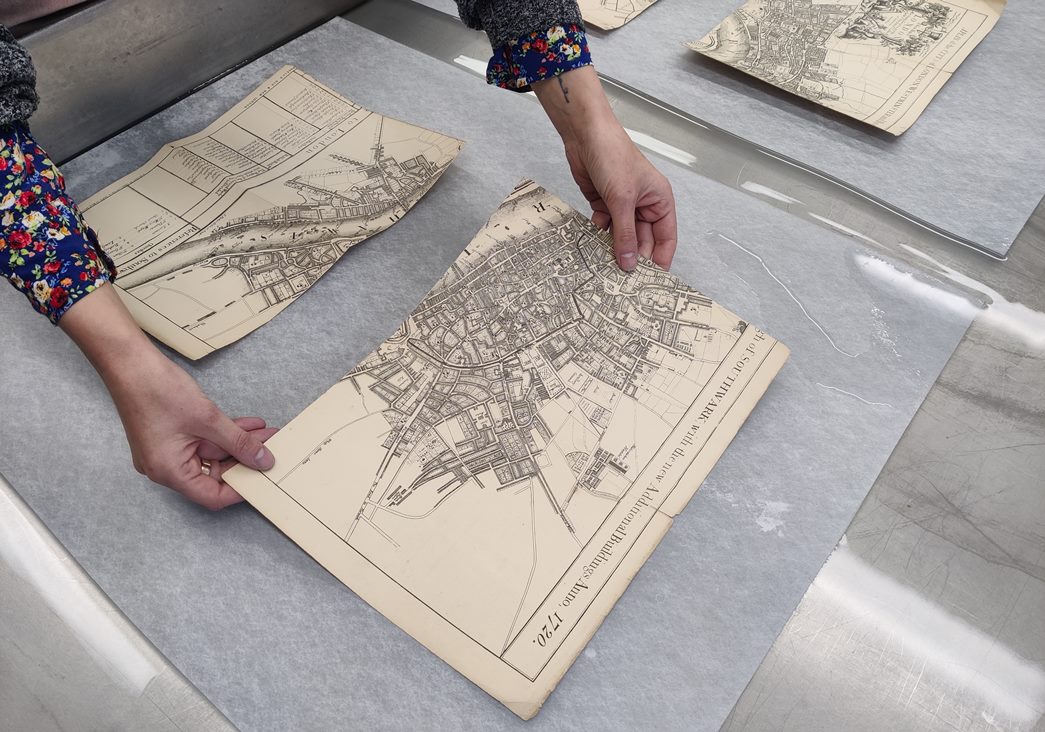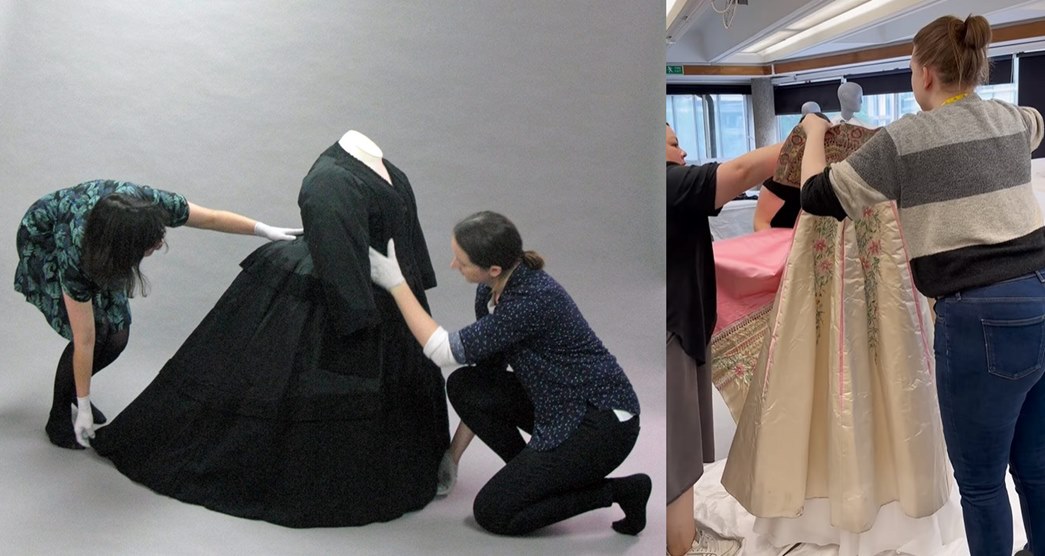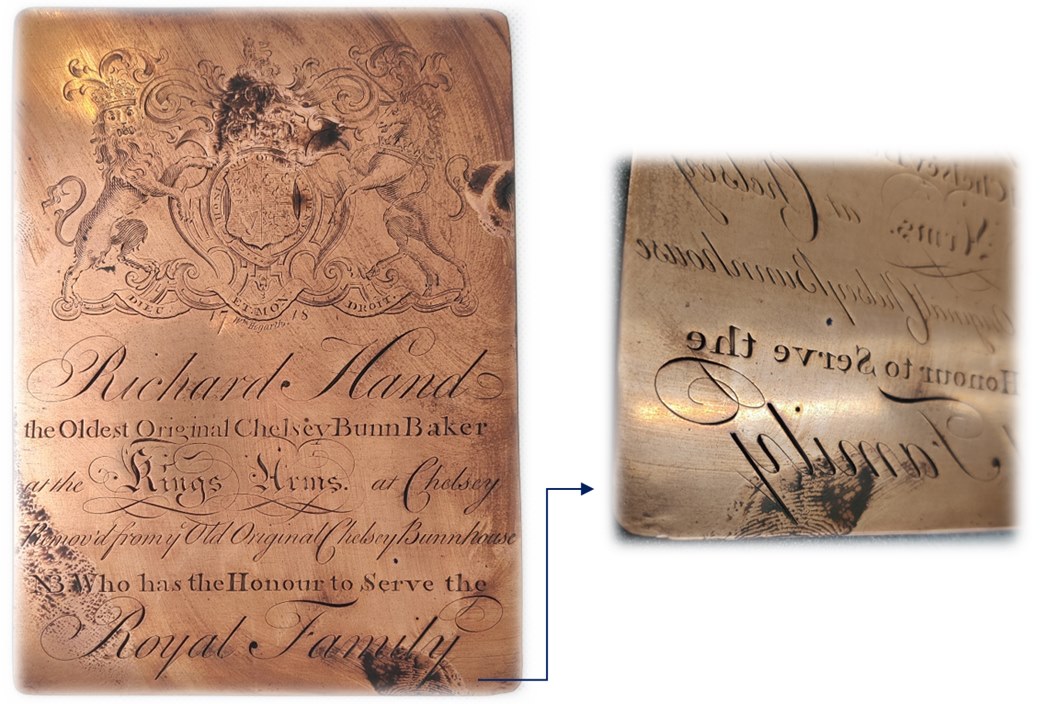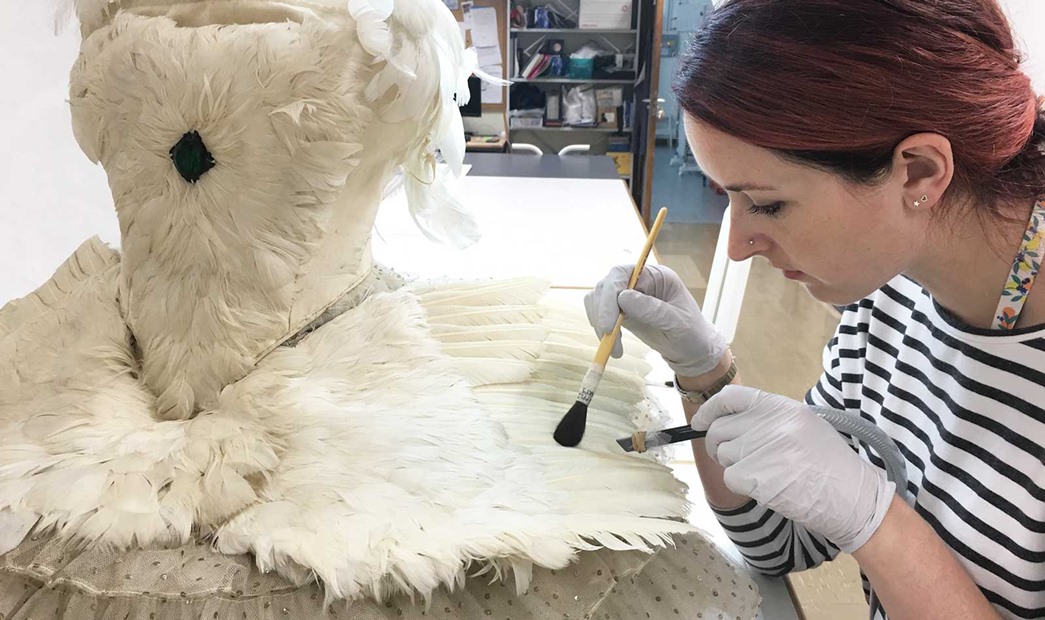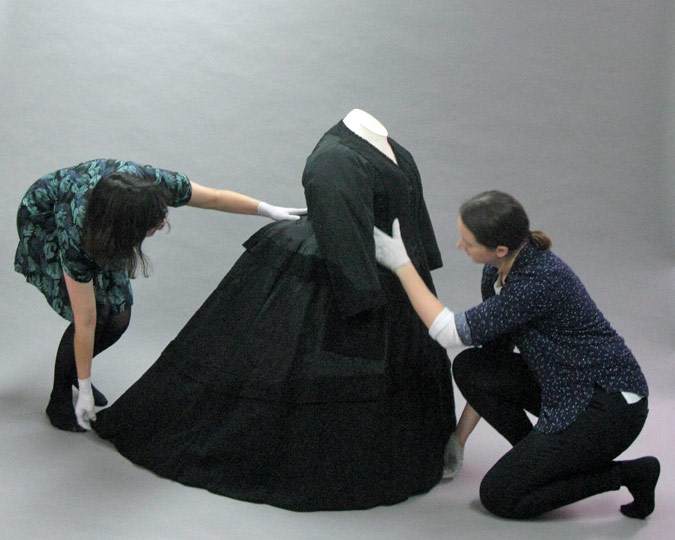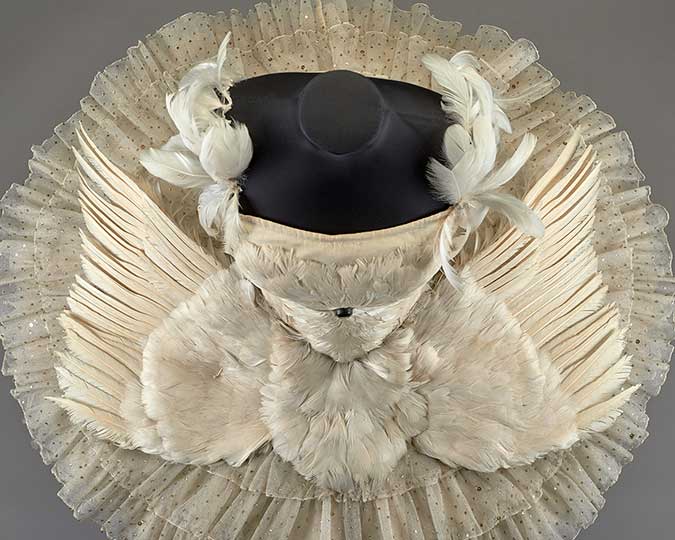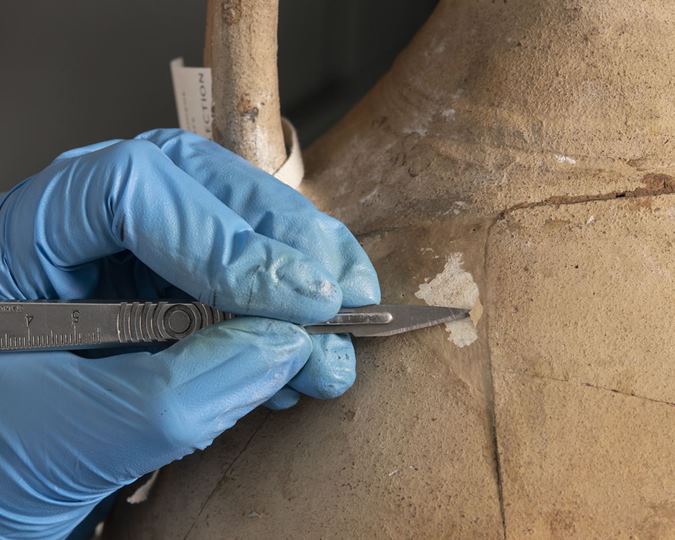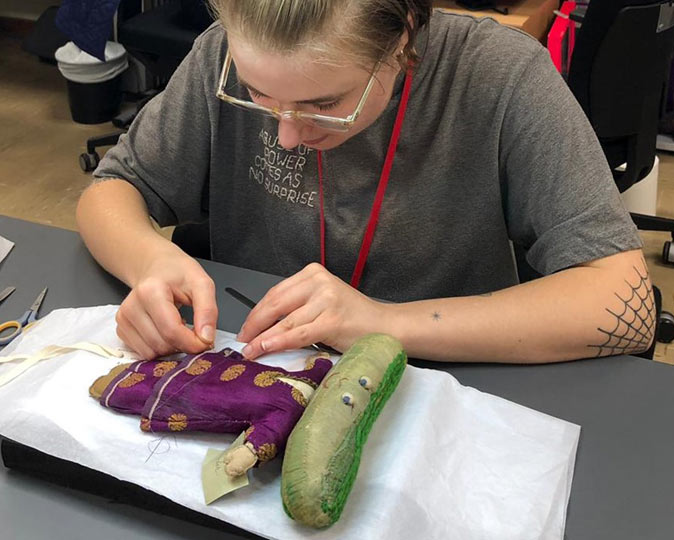All you need to know about glove-wearing while handling objects at the Museum of London.
Conservators, curators and object handlers have to take a lot of things into consideration before touching an object. One of our first decisions is whether to wear gloves. Here, we answer some of the most commonly asked questions regarding the use of gloves at the Museum of London.
1. What gloves are used in conservation?
That depends on the job at hand. Often we wear thin, single-use, nitrile or vinyl gloves. But, if I’m working with solvents or other hazardous chemicals, I’m more likely to use neoprene gloves. Some of us even wear Kevlar gloves from time to time.
But, sometimes, depending on the object and situation — we might use nothing at all.
2. Which gloves would you never use?
We never wear white cotton gloves. Despite what TV and movies may show, most museum professionals prefer not to wear white cotton gloves. These gloves have a lot of problems. They are often ill-fitting and have seams around the fingertips, reducing our dexterity and increasing the risk of damage to objects. They can be very slippery, especially with metal or glass objects. They often leave cotton fibres behind, as they shed, particularly if the object has a rough surface. They also become dirty fairly fast, and can transfer dirt from one object to another, requiring regular laundering. All this makes them quite impractical.
Another one we don’t use are latex gloves. This is because people can become sensitised to latex over time, developing allergies. This is a shame, as latex gloves have a really good fit.
3. Should you handle old books with gloves? Why or why not?
Paper and book conservators rarely wear gloves. Many paper conservators feel that gloves reduce their dexterity and ability to judge the condition of the objects. This increases the risk of damaging fragile and brittle paper, especially when turning the pages of a book. Because of this, conservators advocate handling paper objects with thoroughly washed and dry hands. Paper conservators wash their hands regularly while handling objects.
This does not mean gloves are never needed when touching books and paper objects. For example, gloves should always be used to touch photos and negatives, as fingerprints can damage the delicate surface of these objects.
Paper conservators also wear gloves to protect themselves when carrying out chemical conservation treatments or handling mouldy or hazardous materials.
4. Why is that dress being touched without gloves?
Just like paper conservators, textiles conservators might not wear gloves when handling or mounting costumes. Many textile conservators prefer handling fabrics and costumes with clean, dry hands, as they feel that gloves can blunt their dexterity and feel of the textile.
However, there are many instances were gloves are necessary. Some outfits might have metal threads or gelatine sequins, which can be damaged by fingerprints. Or the objects might be dangerous and gloves are needed to protect the person touching them.
5. When would you wear gloves?
Conservators make the choice to wear gloves – or not to – based on the characteristics of the objects they are handling. The material composition of an object, history and possible past conservation treatments all need to be taken into consideration.
Our conservators always wear gloves when touching polished metals, such as silver and copper, as fingerprints can become etched on their surface. Similarly, objects with lustrous surfaces, such as French polished furniture and photographs, would normally be handled with gloves.
Often conservators must wear gloves to protect themselves from potentially hazardous objects. Museum collections can have a number of objects that may prove to be unsafe to handle without gloves. Throughout the 1800s and early 1900s, many organic objects, such as textiles, furs and taxidermies, were treated with dangerous, long-lived, pesticides. Similarly, many pigments and dyes present in museum objects can be toxic. One such case, is the prevalent use of the highly toxic arsenic green pigments between the late 18th and mid-19th centuries.
6. When should gloves not be worn?
Many objects have robust surfaces that are not particularly affected by the slightly acidic exudations of fingers and palms. This is the case with many ceramic and wooden objects. As the previous answers suggested, many books, paper and textile objects can be handled without gloves. Numerous archaeological artefacts also fall in this category, and I can often be found conserving archaeological leather objects without gloves.
The conservation team at the Museum of London is particularly aware of the issues relating to the manufacture and disposal single use plastics. We are always looking to reduce our environmental impact, and, therefore, we think it is important that we only use gloves when necessary.
Do you have more questions for our conservators? Tweet them out to us @MuseumofLondon with the hashtag #AskAConservator, and we’ll do our best to reply.
Header image: Conservators work to preserve the 1815 London panorama by French artist Pierre Prévost.
Love history and trivia? Subscribe to our
free
History of London newsletter for stories from our collections,
displays and exhibitions.








